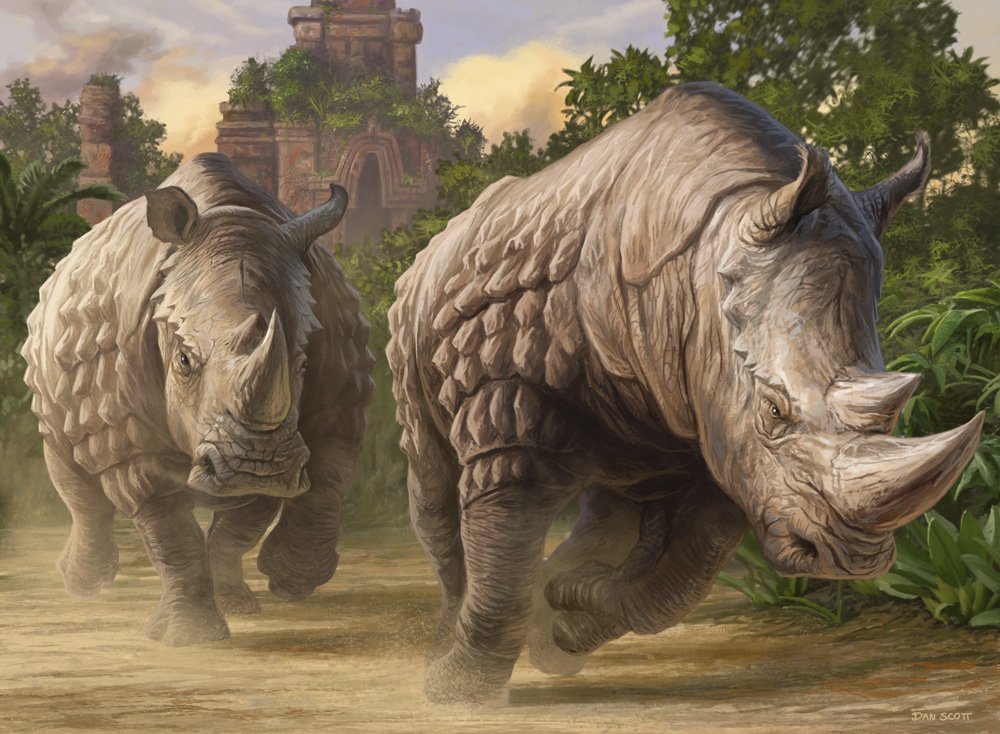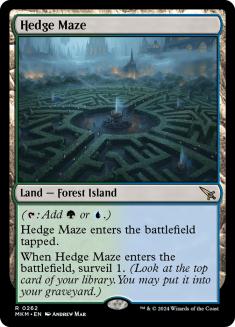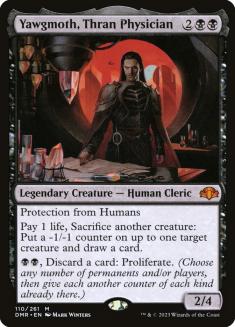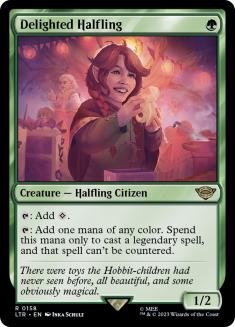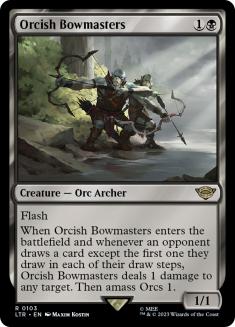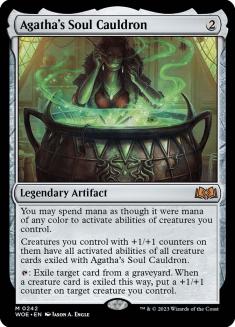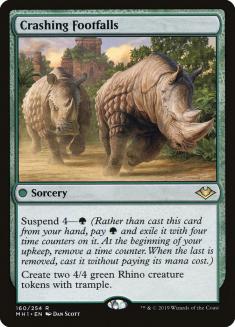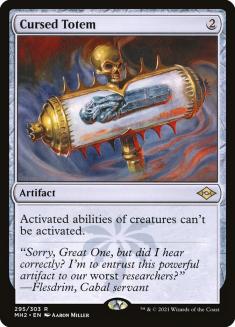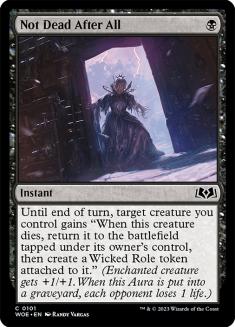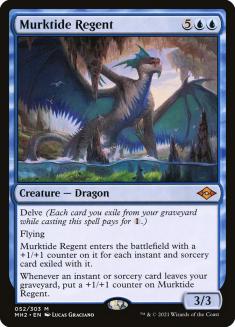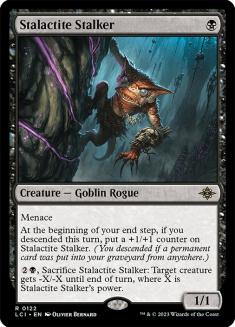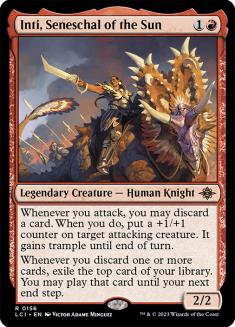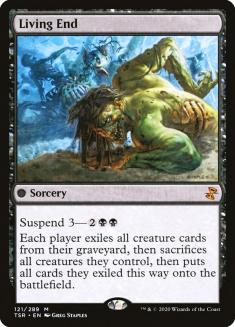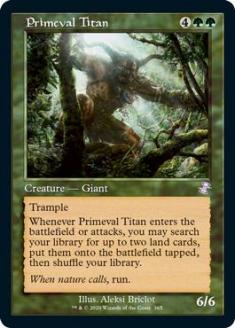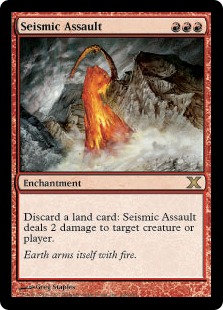When Wizards of the Coast (WotC) announced the return of the paper Pro Tour and the introduction of the Regional Championship system, Modern fans waited expectantly for competitive Magic’s most popular Constructed format to get its turn in the sun. The first few cycles heavily prioritized reviving interest in Pioneer and Standard, forcing Modern to take a backseat – but its time has finally come.
Players from across Europe descended on Ghent last weekend, hunting for invites to the second Pro Tour this year in Seattle. American and Canadian players preparing for their own Regional Championships this weekend are poring over their results – and the Modern events at SCG CON Hartford give them an early preview of how they might respond.
The Winners
Temur Rhinos
Creatures (13)
Lands (22)
Spells (25)

Temur Rhinos is the deck to beat in Modern right now. It has a lot of raw power, it is both relatively easy to play and tough to play against, and it lines up well against the other perceived best decks. It made headlines at the Pro Tour as the best deck to beat Rakdos Evoke. Now, it’s the main news story as the best deck in its own right.
The basic formula is familiar and simple, and the cascade restriction limits your options, but there’s another new reason to join this herd.
The typed surveil dual lands from Murders at Karlov Manor are a big deal for Modern, but their impact is uneven. Last week, I highlighted Temur Rhinos as the most obvious beneficiary of these lands, and they still overperformed that initial hype. The conversation has moved from ‘Will one of these replace the Ketria Triome?’ to ‘How do I find room for a second copy?!’
Golgari Yawgmoth
Golgari Yawgmoth took much longer to break into the mainstream. The deck is complex and just plain weird in a way that either attracts you or repels you instantly. As the spiritual successor of beloved creature combo decks like Birthing Pod, it seemed primed to win the hearts of that audience, but it needed the results to merit that first. Yawgmoth experts who put the time in before it was cool were rewarded with that wave of success, and more recent converts now have a wider base of resources to use in their grisly medical studies.
A steady drip of solid additions from new sets gave Yawgmoth the same arc as Birthing Pod, changing from a combo deck that had to lean on weak enablers like Geralf’s Messenger to a more versatile toolbox deck with a convenient combo finish.
Mostly, though, this is a story of addition by subtraction. A few months ago, Rakdos Evoke was the main litmus test and one that Yawgmoth struggled to pass, but this is the matchup where the loss of Fury matters the most.
The big problem for the good doctor is that one nemesis gave way to another. Temur Rhinos is an even more lopsided matchup than Rakdos Evoke.
People are finally showing respect by playing dedicated hate for Yawgmoth. Cursed Totem is seeing more play in current Modern than at any point in a career spanning three decades. Totem isn’t as utterly disabling as cards like Leyline of the Void or Magus of the Moon are for their intended targets, but it is effective and almost universally playable.
Yawgmoth and his students will be firmly in the spotlight this weekend. We’ll see if they can handle that pressure.
The Losers
Rakdos Evoke
When Rakdos Evoke won the first large Modern tournament in Barcelona after the Fury ban, it looked as though the rumours of its demise were greatly exaggerated. After its poor performance in Ghent, those rumours look more credible than ever. It turns out that losing Fury was a real blow that not only weakened the deck structurally but flipped the easy Golgari Yawgmoth matchup into a much closer fight. Temur Rhinos, which stampeded back into Modern at the Pro Tour to prey on that stronger version of Rakdos, has now stolen its title as the default best deck and keeps getting its own upgrades.
Look elsewhere and the story gets more complicated. The Brazilian Regional Championship that coincided with Ghent saw a dominant performance by Rakdos, with Guilherme Merjam [better known to many as ‘rastaf’ on Magic Online (MTGO), where he did so much to keep Grief on stage] headlining a squad that made up half of the Top 8. Since this success was isolated to that one region and tournament, that may be a vote of confidence in rastaf rather than Ragavan.
Izzet Murktide
I’d cite a successful Izzet list from Ghent as an example here – if only there were any to choose from! For the second consecutive Regional Championship, Kaldheim Championship winner Arne Huschenbeth was leading the pack and making it look easy after Day 1, only to fall back on Day 2. Murktide Regent fans inspired by his early success had to find consolation elsewhere.
This style of deck has a dedicated following across all Constructed formats, but there’s no clear reason why somebody without that loyalty should take a risk on it now. Crashing Footfalls captures some of those play patterns in a more reliable formula.
A Shadowy Path Forward
The results from SCG CON Hartford and this weekend’s MTGO Modern Challenges offer a way forward if you insist on playing fair.
Creatures (29)
- 4 Street Wraith
- 4 Death's Shadow
- 2 Scourge of the Skyclaves
- 4 Grief
- 4 Ragavan, Nimble Pilferer
- 4 Dauthi Voidwalker
- 4 Stalactite Stalker
- 3 Inti, Seneschal of the Sun
Lands (18)
Spells (13)

SCG Tour mainstay Harlan Firer reminds us how he stayed on top with his innovative take on Rakdos that sheds the expensive cards like Fable of the Mirror-Breaker for some sleek new stars. Stalactite Stalker is a flexible, evasive threat, guaranteed to grow every turn in this deck, while Inti, Seneschal of the Sun gives you both card advantage and closing speed, letting a giant Death’s Shadow tear through blockers and pairing perfectly with the Street Wraiths that made that Shadow so large.
How Harlan makes room for all these threats says a lot too. Orcish Bowmasters is a format-defining card that stole the show from all the named characters in its set (who would win, a cursed mind-bending artifact that has to be cast into a volcano after an epic world-historical quest, or a bunch of random Orcs?), but it’s a victim of its own success. Cards and decks that are inherently weak against Bowmasters are forced out of the format, leaving it without easy targets (other than opposing Bowmasters!). Harlan can enlist some Bowmasters post-sideboard as required but has a more focused roster in this maindeck.
Creatures (15)
- 4 Death's Shadow
- 1 Kroxa, Titan of Death's Hunger
- 4 Dragon's Rage Channeler
- 3 Ragavan, Nimble Pilferer
- 3 Orcish Bowmasters
Lands (19)
Spells (26)

Classic Grixis Shadow is there for you too! The pairing of cheap hand and stack disruption with threats like Death’s Shadow that outsize a Rhino token is a great formula for exploiting the clunkiness of a Cascade deck and covering your bases against the wide variety of random stuff you might face in a large tournament like the US Regional Championship in Denver.
The Wildcards
Living End
The Rakdos revival post-ban throttled Living End’s triumphant return, but it never stays dead for long. There’s a familiar food chain in Modern. Whenever the Rhino population gets too large, the Ents and Whales swoop in to devour them. With Crashing Footfalls the big winner from last week, there is a lot of talk about Living End as a wise gamble for players who are comfortable making that late switch.
Amulet Titan
Amulet Titan aficionados face a true test of their commitment. The official data from Ghent shows an alarming contrast: Amulet Titan preys on the format at large and does well against Yawgmoth, but suffers against the rest of the top tier. Crashing Footfalls is a terrifying predator on paper, backing up a fast clock with a wide range of possible interaction (even with no open mana!) and sideboard superweapons like Force of Vigor and Blood Moon. An experienced Amulet pilot can hold their own, but one mistake can spell your doom. As players finally wake up to how strong Magus of the Moon is against Amulet Titan, anyone who wants to ward off the Amulet menace knows what to do.
Amulet disciples looking for reassurance want their deck to do well, but not so well that it prompts another round of this backlash. The Ghent results are good news in that regard, but even I can’t recommend anyone take the plunge if they are still on the fence.
Seismic Assault?
The Living End lifecycle and these other developments all involve familiar decks. With Modern’s top tier looking all too stable, fans at home want something new and exciting to focus on. This latest Seismic Assault craze is just the ticket. What started as an attempt to port the Slogurk shell from Standard to Modern has grown into an open-ended exercise in innovation.
These fair Assault decks are reminiscent of the Life from the Loam decks that defined Extended many moons ago, before ‘Modern’ was a glint in Gavin Verhey’s eye, but there are some more adventurous ‘unfair’ Assault decks too. The hybrid Indomitable Creativity + Seismic Assault decks make sense when your mana is already warped so heavily to support one triple-red card.
There’s something here – but can you crack the case in the few days or weeks before your Regional Championships?
Everyone has a strong take about the current state of Modern and what they hope for or fear from Modern Horizons 3 this summer. For now, though, the terms of engagement are clear – and Modern masters continue to see their hard work pay off.

